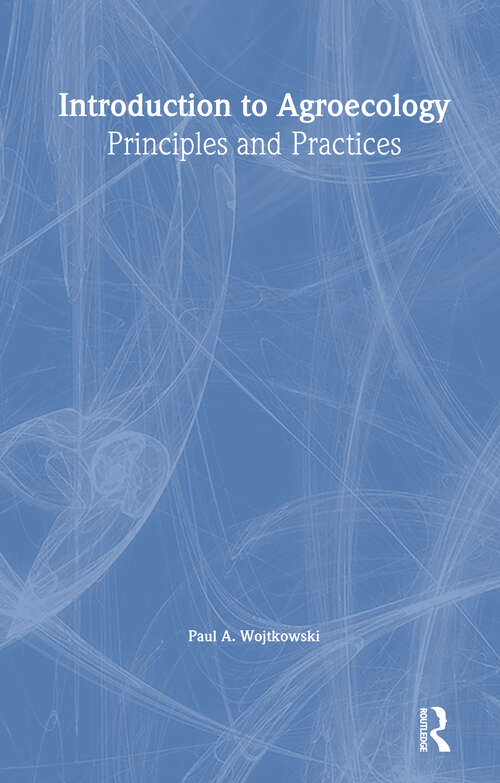Introduction to Agroecology: Principles and Practices
By:
Sign Up Now!
Already a Member? Log In
You must be logged into Bookshare to access this title.
Learn about membership options,
or view our freely available titles.
- Synopsis
- A crucial reference/textbook that provides a wide spectrum of information in one easily understandable sourceThe essence of agroecology lies in harnessing and harmonizing the forces of nature for productive purpose. Introduction to Agroecology: Principles and Practices comprehensively explains how this is done, providing a detailed, inclusive look at the underlying theories, concepts, and practices. This allows the reader to explore the full range of possibilities of the nature/agricultural interface and to view agroecology in its entirety, all while providing a clear understanding of the inherent complexity. Productive threats to cropping such as soil depletion, drought, plant-eating insects, heat and cold, weeds, and small and large animals are discussed in depth—with preventative strategies for each—all together in one easy-to-use book.This unique introductory reference source is not only aimed at the novice, but also the more advanced student. In a departure from the norm for introductory material, extensive endnotes elaborate upon the basic information, presenting a full look at the arguments and controversies within the field. The endnotes include over 500 citations, offering a broad window that encompasses ecology, sociology, conservation and environmental studies, and several other fields. The text also contains numerous charts, figures, and tables to clarify data and ideas.Introduction to Agroecology reviews and discusses: agroecological goals, such as profit, quality of life, and minimum disturbance of the natural ecosystem spatial principles, with resource concepts such as capture, production, balance, and biodiversity planting densities, ratios, and spatial patterns facilitation of nutrient and water capture-transfer ecosystem governance certainty-sustainability threats, such as drought, wind, flood, temperature, and fire the use of fences, repellant plants, fauna, and other means to stave off large animal threats basic insect countermeasures agrotechnologies subdivision, scaling, design packages, agrobiodiversity adjustments, and mimicry monocultures seasonal intercropping facilitative and productive agroforestry the use of reservoirs, corridors, wind structures, riparian buffers, firebreaks, and other means as auxiliary systems land modification social and community agroecology core approaches to alternative agriculture, including genetic, microbial, varietal, rotational, and others agroecosystem design many, many more topics Introduction to Agroecology is a unique and accessible reference for those who seek a deeper understanding of the mechanisms and practices that provide a solid foundation for the study of agroecology, including researchers, extension advisors, instructors, and students.
- Copyright:
- 2006
Book Details
- Book Quality:
- Publisher Quality
- ISBN-13:
- 9781040288887
- Related ISBNs:
- 9781003578376, 9781040292266, 9781560223177, 9781560223160
- Publisher:
- CRC Press
- Date of Addition:
- 11/01/24
- Copyrighted By:
- Taylor & Francis
- Adult content:
- No
- Language:
- English
- Has Image Descriptions:
- No
- Categories:
- Nonfiction, Science, Outdoors and Nature, Technology, Earth Sciences
- Submitted By:
- Bookshare Staff
- Usage Restrictions:
- This is a copyrighted book.
Reviews
Other Books
- by Paul Wojtkowski
- in Nonfiction
- in Science
- in Outdoors and Nature
- in Technology
- in Earth Sciences
